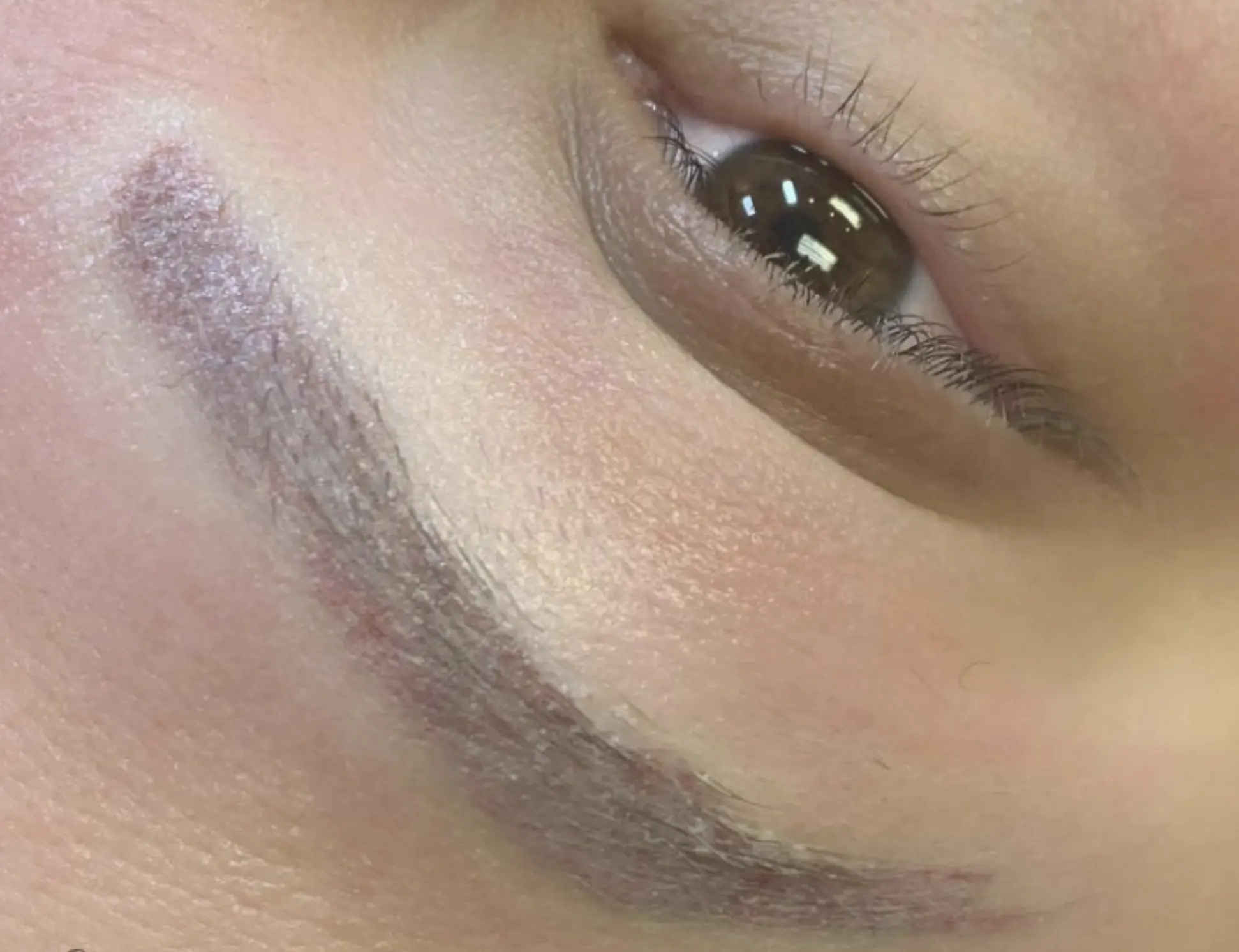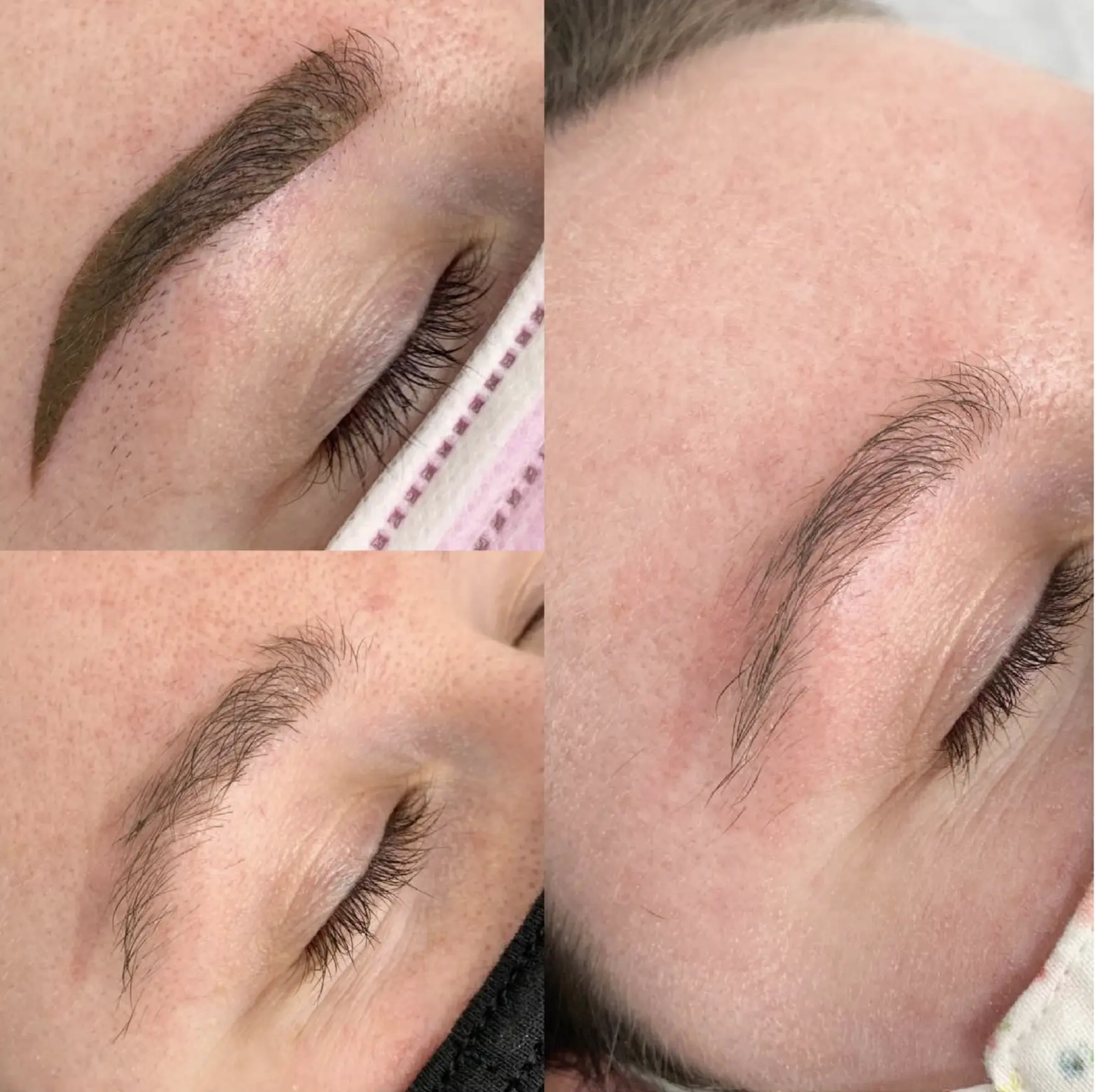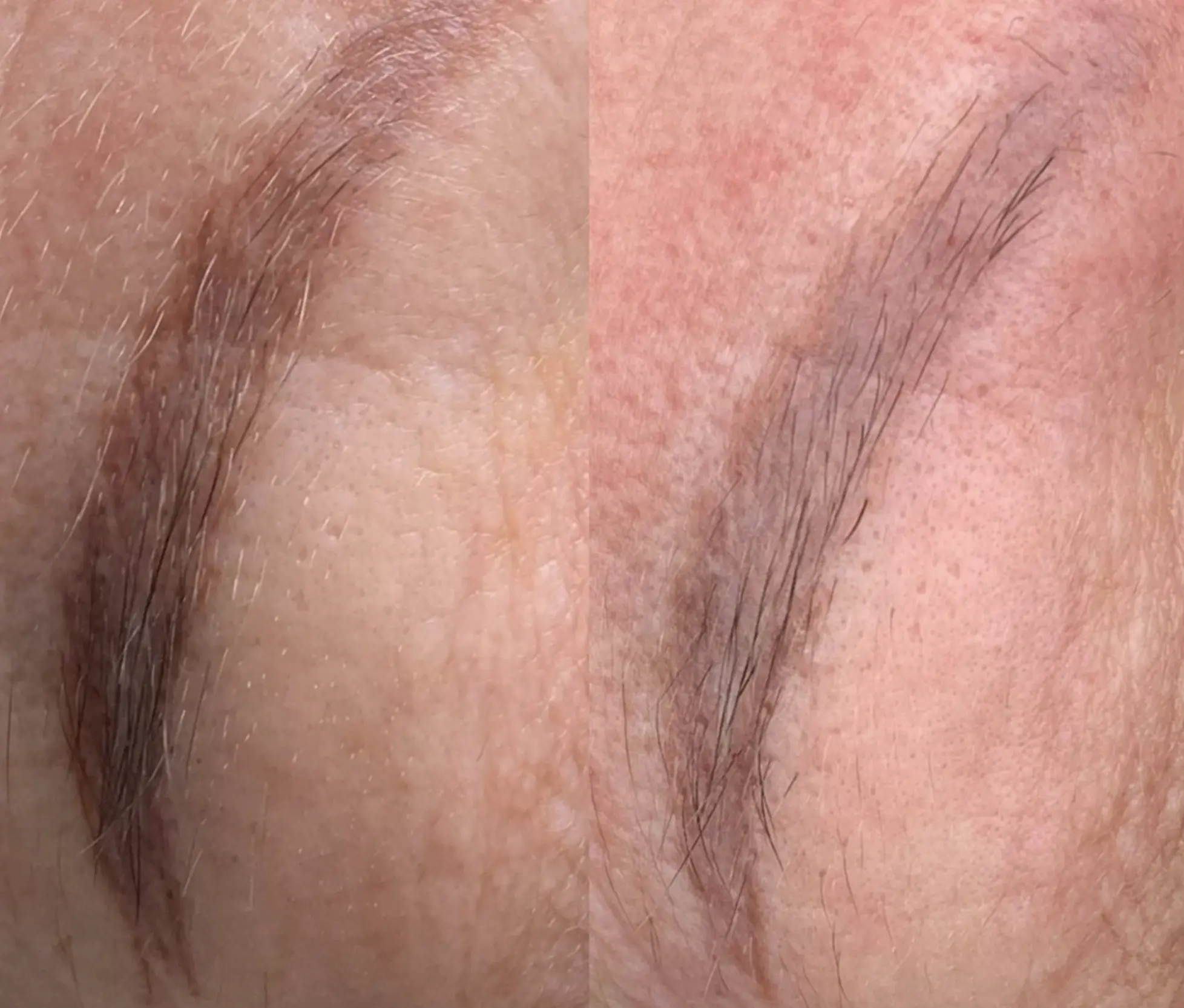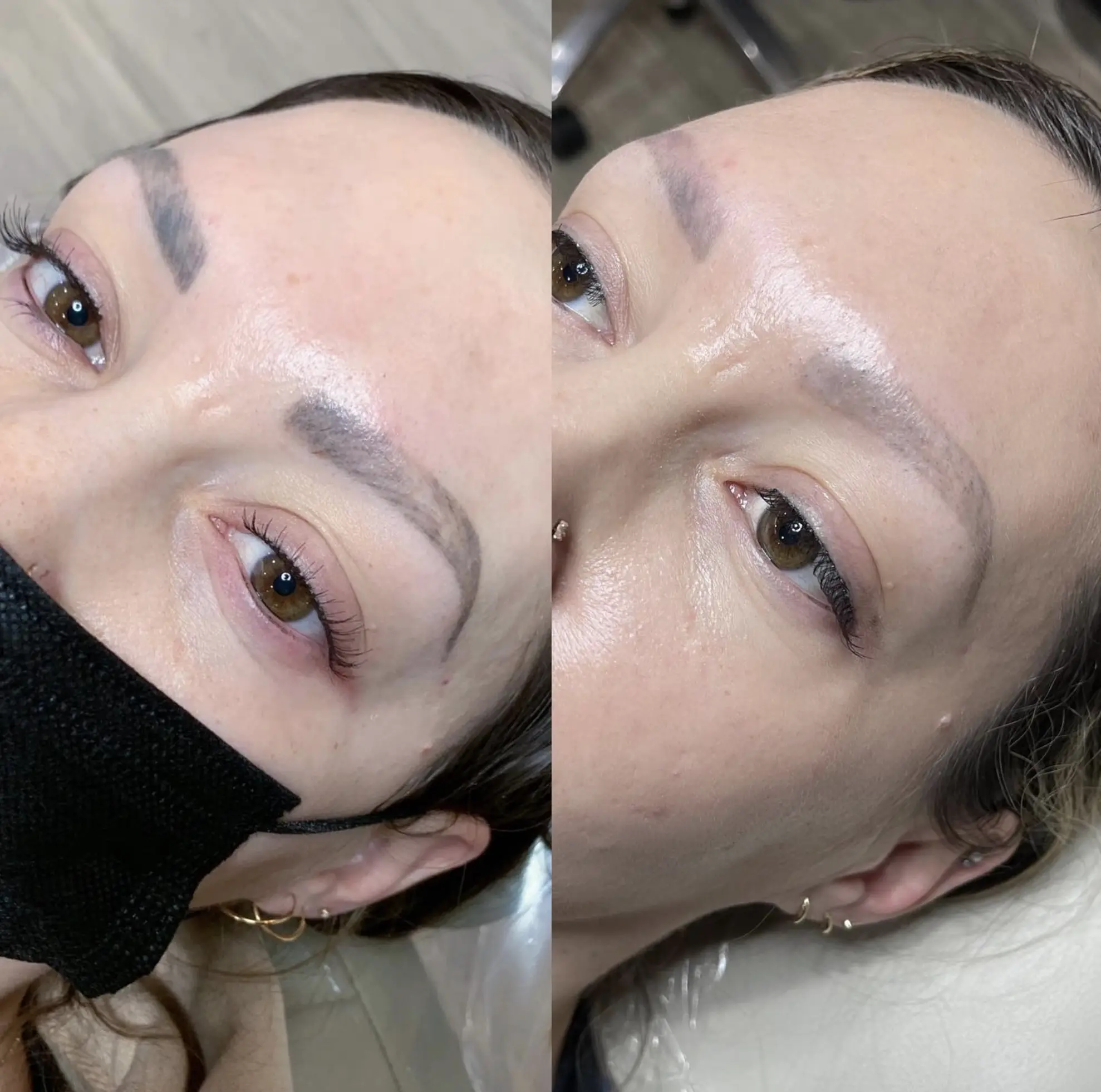Saline tattoo removal is becoming a popular alternative to traditional laser tattoo removal because of its versatility and can be used on all skin types. One thing people may experience after saline tattoo removal is the “ghost effect”. This article will explain what the ghost effect is, why it happens and how it affects the healing process when removing unwanted tattoos. We will also look at how it differs from laser tattoo removal and how it affects the removal of tattoos, including lighter and darker skin types.

What is Saline Tattoo Removal?
Saline tattoo removal is a removal process where a saline solution is used to lift the tattoo ink out of the skin. This method is chosen for multicolored tattoos, darker skin types and lighter skin types and avoids the risks of laser tattoo removal technology. By applying a saline solution into the skin with a tattoo artists tools the ink rises to the surface and forms a scab. Once the scab naturally falls off it takes some of the pigment particles with it and aids in pigment clearance.
While this method has minimal side effects it can result in a ghost tattoo or ghost images – a subtle but visible shadow of the original tattoo.
If you’re looking for tattoo removal near me saline tattoo removal may be an option for you especially for smaller or more delicate areas like the eyebrows. This method gives you more control over the tattoo removal process and is great for cosmetic tattoos.
The Ghost Effect
The ghost effect also known as the ghost of tattoos is the faint outline or shadow of a removed tattoo that remains visible even after multiple sessions. This can appear as a watermark or impression of the original tattoo, more noticeable on fair skin or lighter skin types.
Saline removal may require multiple sessions for complete removal depending on the size and complexity of the tattoo. Saline tattoo removal works on all tattoo types but some pigment may remain after the first session.

Why Does Effect Happen?
Several things contribute to the ghost effect after saline tattoo removal and it’s important to understand these to know what to expect for healing time and process. Here’s why the ghost effect happens:
- Tattoo Ink and Depth: The ink used in tattoos, whether cosmetic or decorative, is injected into the skin at different depths. Some intradermal tattoo pigments are harder to remove if they are deeper, leaving a faint shadow of a ghost tattoo.
- Skin Types: Fair skin types heal quicker and more noticeable, darker skin types heal slower with more ghost effect. The laser tattoo removal process, which uses laser wavelengths to target ink pigments, can be ineffective on darker skin due to risk of hyperpigmentation or hypopigmentation.
- Multiple Treatments: Saline removal process usually requires 1-5 tattoo removal treatments. The ghost effect shows up after 1 treatment, but with each subsequent treatment more of the pigment is removed and the ghost tattoo will fade away.
- Healing and Aftercare: Aftercare is key to reducing the ghost effect. Follow the aftercare instructions and avoid sun exposure or hot showers during the healing period and the ink will be drawn out. Not following aftercare instructions can lead to infections like bacterial or fungal infections which can compromise the removal process.
If you’re still unsure which method is best for your tattoo removal, it’s always good to check local options for tattoo removal near me. You can find clinics that offer both saline tattoo removal and laser tattoo removal to compare the two for your situation.
Comparison with Laser Tattoo Removal
Laser tattoo removal, especially Q-S laser-assisted tattoo removal, is another method of tattoo removal including amateur and professional tattoos. Lasers are good for mostly monochromatic black tattoos but can be ineffective or leave behind tattoo reactions like color mismatch and shadows of the ghost effect.
Unlike saline removal, lasers break down ink particles with laser light and laser wavelengths. The process can take 1-5 treatments for smaller tattoos or more for complete pigment clearance.

Managing the Ghost Effect
While the ghost effect can’t be completely eliminated, you can reduce its appearance:
- Aftercare
Follow aftercare protocols like no direct sun, no hot showers and no harsh skin treatments to ensure optimal healing. A good aftercare regime promotes even skin regeneration. - Advanced Skin Treatments
Post removal options like microneedling, active cooling or resurfacing can improve pigment clearance scores and reduce scarring or uneven pigmentation. - Time and Patience
The ghost effect usually fades after 10-12 weeks as the skin regenerates. Complete clearance may take multiple treatments over time. - Sun Protection
Use a broad spectrum sunscreen to protect the treated area from UV exposure which can worsen pigmentation. - Consult Specialists
Consult experienced laser specialists or dermatologists for advanced laser tattoo removal if the ghost effect persists after saline removal.
Side Effects and Complications
Healing time varies by skin type. Common side effects:
- Bacterial infections
- Fungal infections
- Systemic infections
- Minor scarring or textural changes
For darker skin types, the risk of hyperpigmentation or hypopigmentation is higher. Follow professional aftercare instructions to minimize these risks.

Duration of the Ghost Effect
It varies depending on skin type, time between treatments and technique. It usually fades within 8-12 weeks but can take several months or even years.
Conclusion
The ghost tattoo effect is a part of the tattoo removal process whether it’s saline or laser removal. It can be frustrating but understanding the causes and managing your expectations with proper aftercare and professional treatments can make it less visible. See a professional for a custom approach for the best results for your skin tattoos.
Looking for tattoo laser removal Melbourne? Compare the services, laser tattoo removal cost and reviews of the clinics to make your decision.
FAQ
How long does it last?
The ghost effect is temporary and can last from a few weeks to a few months depending on skin type and tattoo depth.
Can the ghost effect be removed?
Yes with proper aftercare and possibly extra treatments the ghost effect will fade away.
Does the ghost effect happen with laser tattoo removal?
The ghost effect can also happen with laser tattoo removal for the same reasons of ink depth or pigment resistance but it’s less noticeable than saline removal.
How many treatments to remove the tattoo?
1-5 treatments to fully remove the tattoo depending on tattoo size, ink composition and skin type.
Is saline removal safe?
Yes saline removal is safe when done by a trained technician but requires proper aftercare to avoid infections and side effects.